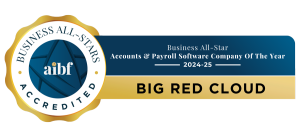All high-impact marketing begins with a well thought out marketing strategy. A more strategic plan will ensure that you have well defined, achievable, clear, and even measurable marketing objectives. In turn, it will guide how you manage and run your business. And in today’s extremely competitive business landscape, good marketing is more important than ever.
Ideally, developing your marketing strategy plan should be done alongside and with input from your team. A robust marketing plan doesn’t just contain a list of bullet points that make suggestions such as “post more on Facebook”. Instead, when designed correctly, it will:
- Break down your business, as well as its services or products
- Look in-depth at your current position in your sector
- Help define your customers and your competitors
- Identify the strategic marketing methods you can best take advantage of
- Make creating a marketing strategy plan easier, with clearly identifiable metrics to measure its effectiveness
There are many benefits to marketing for a small business, but knowing how to write a marketing plan is a big one. A marketing strategy plan goes far beyond the basics. It’s a tactical document that can be tested, updated, and used to guide the growth of your business. To create a successful marketing strategy plan, here are some essential steps.
Step 1: Identifying your business goals
The first step to creating a strategic plan for small business marketing is to align marketing with your business goals. Those goals should be identified and listed in your business plan. Examples of business goals could include:
- Improving brand awareness
- Increase selling of a specific product line
- Reaching a specified target audience
When you set your business goals, it’s important to be as targeted as possible. The clearer you are, the easier it will be to identify when those goals are hit.
Step 2: Setting your marketing goals
Having goals is a proven way of improving productivity. When your team knows what they’re working toward, they will be motivated to align efforts and work collaboratively. Clear marketing goals will ensure that everyone is on the same page and that the goals can be measured.
There are many goals that you might have for your marketing. Examples would include the following common goals of a marketing team:
- Increasing brand awareness
- Improve the rate of return customers
- Generating more leads
- Establishing the business as a thought leader
- Improving brand engagement
It’s crucial that your marketing goals and business goals are closely aligned. Far too many business owners focus on vanity metrics such as increasing likes on social media. If marketing goals don’t (or can’t) improve the likelihood of reaching your overall business goals, then they will have little value.
One important thing to remember is that marketing — especially digital marketing — takes time. While quick and easy wins are certainly possible, most strategies need time to bloom. Everything from improving your SEO to using paid ads on search engines will take time to show results, so don’t expect immediacy.
Step 3: Market research
The more that you follow the trends of your industry or sector, the easier it will be to ascertain where your business is positioned. That means ongoing research. You need to collect as much information about your market as possible and learn the following information, such as:
- Size (and growth rate)
- Consumer trends in that market
- Target audiences
A marketing strategy plan is not a static document. It should be constantly reexamined and adjusted as consumers change, new trends emerge, and new products are unveiled.
Step 4: Target audience profiles
It’s a business truism that the more you know about your customers, the easier it is to sell to them. That’s where buyer personas come in. Create a profile of your ideal customer based on what you know about your target audience. Segment that audience into different buyer personas. You will now have profiles that will be easier to monitor and make it simple to track buying patterns such as how, where, and when they buy.
Like researching your market, your audience research needs to be ongoing. That way, you can ensure that you won’t miss out on any potentially profitable opportunities, and you can even begin to get your customers to start selling for you. It can also help you avoid falling through the cracks of brand visibility because your marketing message will be more targeted and relevant to each recipient.
Step 5: Competitor research
Competitor research should have been a big part of your business plan. As with your marketing strategy plan, a business plan is not just something you can hand over to a bank manager or investor and then forget about. It’s a living document, and what you learn from it can be used to create a more effective small business marketing plan.
Look at your ongoing competitors and watch what they do. Study their marketing campaigns and look for what works and what doesn’t. Is there a demographic that they’re not targeting? Is there a marketing channel they aren’t using or any marketing tricks they’ve missed? Make sure that you know everything you can about their products, their supply chain, and their prices. Use that information to guide your marketing strategy plan and earn an organic competitive advantage.
Step 6: The Ten Types of Innovation framework
From the Pomodoro Technique to gamification, there are many different work systems available that can be useful to your marketing team (and your business as a whole). One of the working methods that has been growing in popularity is the 10 Types of Innovation strategy. This more creative method of ongoing problem solving can be extremely useful when planning your marketing strategy as it encourages you to think outside the box.
The key to getting the most value out of your work systems and methods is to tailor them to match your team’s working style. Not every member of your workforce will work well when watching the clock constantly or can focus without some kind of formal structure. So, find the work methods that best suit your work culture and align with your existing workflows.
The key to small business marketing
Small businesses often neglect marketing, except at a very superficial level. They set up social media pages and start posting, but they do so without any defined goals or overall strategy. Your marketing plan needs to be much more than just a diary of possible Facebook posts and the occasional blog update.
Instead, your marketing strategy plan can be the key to building your relationship with your customers and earning more revenue as a result. Take the time to develop your marketing strategy, involve your team, and start benefiting from expanded reach and a growing number of loyal customers.
Of course, managing a marketing budget isn’t easy, and it can be even harder to justify a spend if you’re bootstrapping. That’s where cloud-based accounting software comes in. Your accounts aren’t just necessary to get right when it comes to the end of the tax year. When used proactively, your finances can help guide your business and drive it forward.
If you want your accounts to give you growth insights and help ensure that your marketing is managed right, talk to the team at Big Red Cloud today. Or, if you’d prefer to find out for yourself just how easy we can make balancing your books, try a free trial of our groundbreaking accounting software. Together, we can turn your marketing strategy plan into a bulletproof resource that your business can only benefit from.




